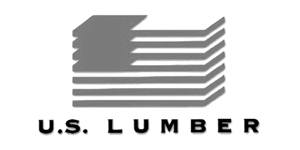Share this:
Share on Facebook
Share on Google Plus
Pin on Pinterest
Tweet on Twitter
Generally, the forward thinking concept of building a home in which the owner may someday use the basement as a living space wasn’t widely practiced until the 1950s and 1960s. Older homes had basements which were primarily a place to keep the furnace and other utilities, as well as storing things that can handle the cooler, damp atmosphere. On the plus side, cool basements were excellent for storing canned goods.
Nowadays, finished basements are a common and economical way of improving your home. Living space is greatly increased, and the home’s resale value goes up as well. The challenge is of course, that finishing a basement isn’t the same as remodeling other areas of the home. In many cases, when people think of finished basements, they think of a room that will not measure up to the same standards of the rest of the home. That is no longer the case. The construction industry has made many innovations over the years, and there is virtually a product for every challenge you may face while refinishing your basement.
Before spending any money on materials, take a good look at your basement in its current state. Look for cracks on the floor or walls. Is the wall bowed? These conditions may indicate a larger problem that will only be hidden by the thin skin of a basement refinishing job. As a rule of thumb, the National Association of Home Builders (NAHB) has established the criteria for what is acceptable for cracking in block walls. Cracks up to ¼ inch are acceptable and those larger must be addressed. The NAHB allows for 3/16 of an inch for cracks and/or vertical displacement on concrete basement floors. In both of these situations, it is best to observe them over time and see if there are leaks, seepage or any further movement. In the case of bowed walls, an allowance of less than 1 inch is acceptable as long as there is no further movement. If any of these conditions are beyond acceptable levels, professional advice should be sought out before proceeding with the basement remodel.
Here are some things to think about while planning your future basement refinishing project:
Take a look at your electrical service and furnace. Are they capable of handling the new demands?
If you wish to install a bathroom, take a good look at your plumbing. Does the main drain for your house go underground (in relation to the basement floor) or does it run above ground? If it runs underground, then plumbing the new bathroom shouldn’t be much more complicated than anywhere else in the house. If the main drain runs above ground, then you will need to also install a grinder and pump to move the water and material up to the main drain after a flush.
Consider the ceiling height. If you intend to use your basement for exercise, then hold your arms over your head to determine if the height is adequate. If you plan on using a treadmill for example, then you will need to add that height as well.
At the end of the day, basements are basements. That means there could be future issues with water, no matter what you do. It is best to install either a floor drain or a sump pump and pit to handle excess water in the off chance of future flooding.
Consult your insurance agent in regards the coverage with your new living space. Some insurance companies apply special conditions to finished basements, as opposed to the rest of the home.
In most cases, natural light is hard to come by in a basement. Since many building codes also require a second way to exit the basement, this is an opportunity to allow more light in, by installing an egress window and window well. A large window well on the outside can let a surprising amount of light in, and you’ll be satisfying the building codes at the same time.
Creating an open stairwell into the basement from upstairs is a great way to allow more natural light in while connecting with the upper part of the house in an inviting way.
Choose building materials that are resistant to water and humidity. All products should be designed to resist mold, dust mites and rot. A product such as fiberglass-faced drywall can be a good choice since it doesn’t contain paper like conventional drywall, which harbors mold. Keep in mind though, that the whole surface of fiberglass-faced drywall will need to be skim coated with joint compound before painting.
If you plan on tackling a basement remodeling project, stop in and we’ll be happy to answer any questions that you may have.
Our Divisions
Sorry, we couldn't find any posts. Please try a different search.






